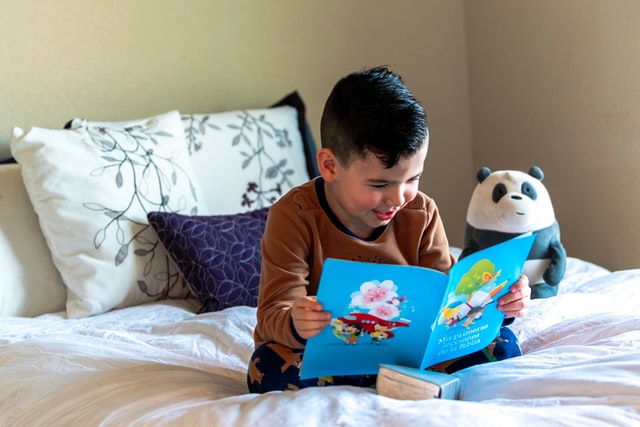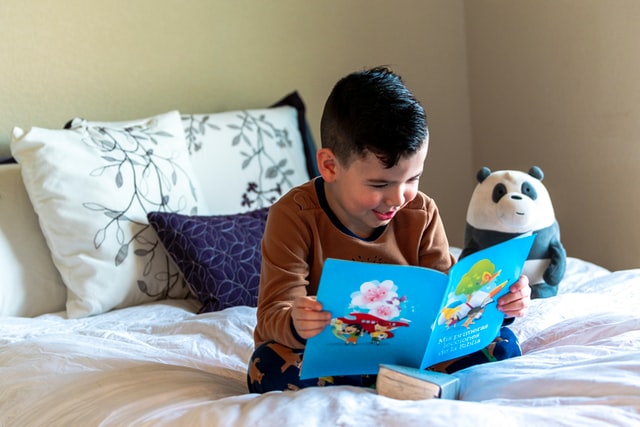
Reading is a skill that everyone begins to learn when they enter elementary school or possibly before then at home. It’s necessary to learn to read to navigate life. Some children seem to love books, and others could do without them.
Every parent wants their children to read more, but before you force your child to sit alone for hours with a book, you should understand why they don’t want to read. Perhaps reading is too difficult for your child or they think it’s boring. It’s not uncommon to have children who aren’t interested in reading. That’s why it’s up to you to make reading exciting and enjoyable for your child.
After reading these clever ways to get your child to read more, you’ll see an increase in interest in reading!
1. Read to Them
Your child looks up to you. Anything you model, they’ll likely do. That’s why they need to see you both reading on your own time and reading to them or with them. Make sure your children see you reading. This will spark their curiosity, and they’ll want to read, too.
Also, read books to them. Especially if you have kids that can’t read, make it a habit to read at least one book every day to them. They’ll love hearing you bring the words to life.
2. Have Your Kids Listen to Audiobooks
Swap out their pop playlist for some audiobooks. Audiobooks certainly count as reading, and they’re a great way to get your child reading. Some children learn better by hearing, so listening or reading along with audiobooks will help them read more confidently.
If you’re headed for a long car ride, set up a playlist of books. They can practice reading while listening to someone else read.
3. Set Aside Regularly Scheduled Reading Time
To create a habit of reading, it’s best to set a regular reading time. Maybe it’s when the kids are done with school or right after dinner. Either way, keep the time consistent.
Encourage your kids to grab a book and read for an allotted time. If you’re just starting, keep it short. As they get into reading, you can increase the time.
4. Find Material for Their Age
If the books are beyond or not meeting your child’s reading level, they aren’t going to enjoy reading. Motivation to read will decrease when there aren’t any books that your child can read.
Most books have a reading level printed on them. If you’re unsure of the reading level, ask a librarian or your child’s teacher. They’ll help you find material that matches your child’s interests and reading abilities.
5. Create a Comfy Reading Nook
Who wouldn’t love a quiet, comfortable place to sit down and read? A reading nook is a special place in your house or even in your child’s room dedicated to reading. Set them up with a bookshelf, a comfortable pillow they can rest on, some blankets and a lamp.
Reading nooks also encourage independent reading. Your child can get away from distractions or annoying siblings by going to the reading nook and diving into a book!
6. Visit the Local Library
Get your child involved in the local library. Set them up with a library card so they can borrow books. It will save you money in the long run because you can borrow books instead of purchasing them.
Every time you go to the library, make it an adventure. Many libraries have activities for children, like storytime and games. Plus, your child can make new friends with other book lovers at the library.
7. Reread Books to Your Younger Children
Younger children can better develop their language development when you read the same thing over and over. They’ll become familiar with the pictures, page-turning and eventually realize that it’s the same book.
Choose books with fun story plots and rhyming. They’ll recognize the sounds of the words you’re saying and the repetition. Rhyming helps them remember and predict what word might come next.
8. Have Your Child Read a Recipe While You Cook
This tip will make your child read without them realizing you’re trying to get them to read more! Often, with recipes, you have to reread the ingredients and instructions over and over. This will help your child comprehend what they’re reading because they have to slowly read for you to understand what to do.
You can also read as your child makes a recipe. They’ll have to comprehend what you’re saying, which will help them read better.
9. Ask Others to Gift Your Child Books
Start building your child’s library early! If family members keep bugging you about what to get for your child’s birthday or Christmas, suggest books. You can never have too many books.
As your child receives books as gifts, they’ll realize that books are valuable. Your child will continue to grow in their interest in books, so they’ll be excited to get reading every time they receive a new story.
10. Offer a Variety of Genres
Every child has different things they like. Maybe you have a child who loves comedy. Perhaps the other child loves action and adventure. However, with books, you want to offer a variety of reading materials.
Children naturally gravitate towards fiction books. While fiction books are great, don’t limit them to only fiction. Add in nonfiction, biographies, cookbooks and children’s magazines.
By making reading fun, your child will begin to read more. They’ll love heading to their reading nook, picking a book from the library and even reading stories to their younger siblings. Encourage your little one to read starting now!











